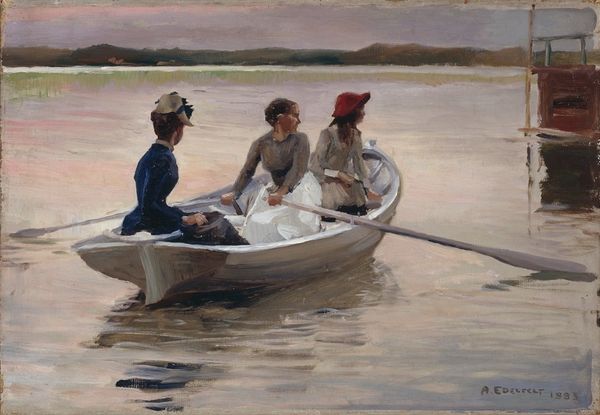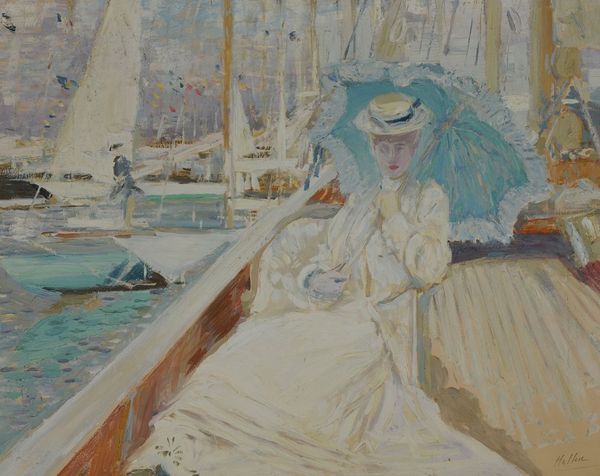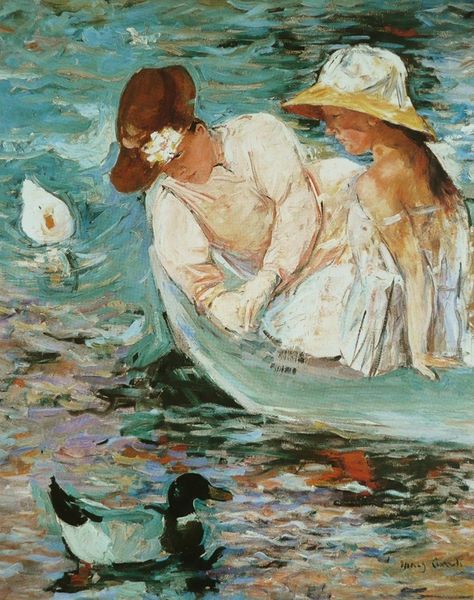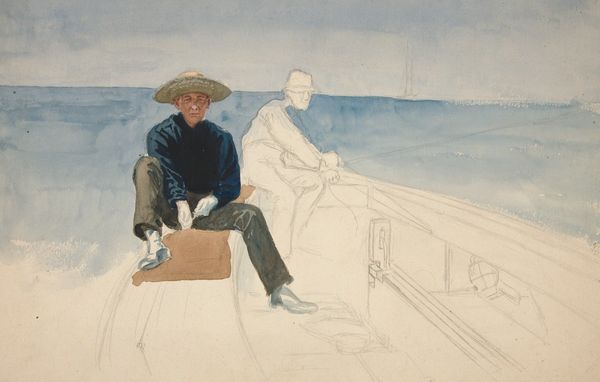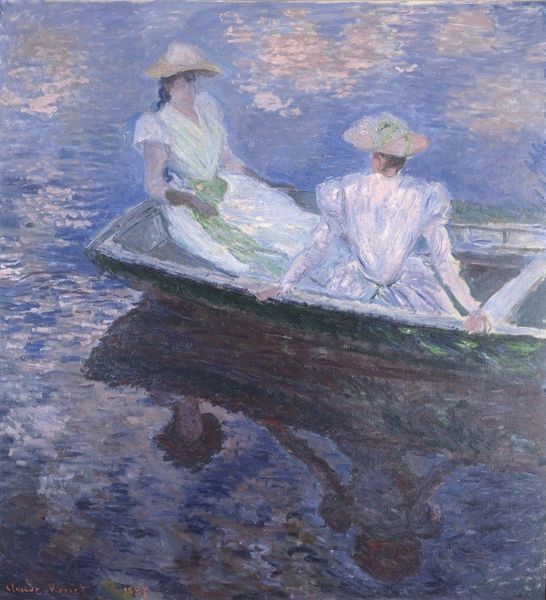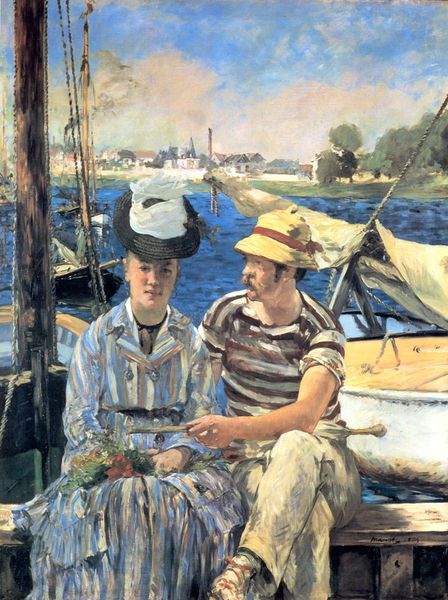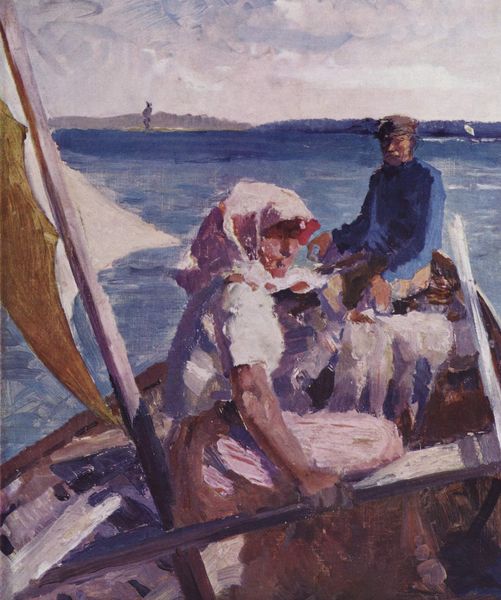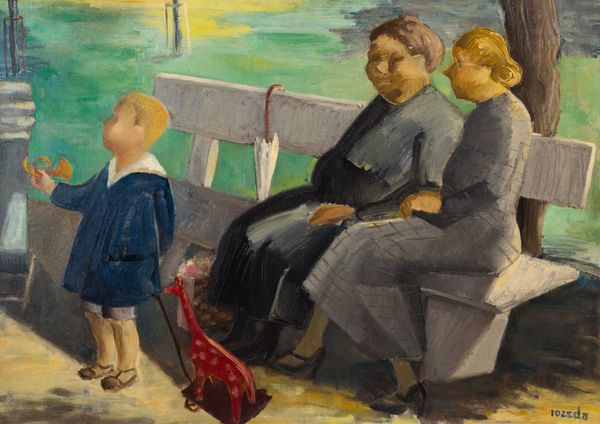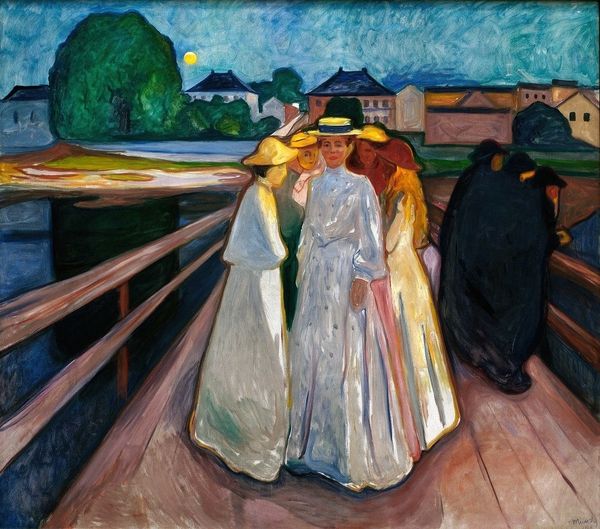
Copyright: Public Domain: Artvee
Curator: Welcome. Here we have Mary Cassatt's "The Boating Party," likely painted between 1893 and 1894. Editor: It’s striking. The dark blues of the water against that nearly fluorescent yellow of the boat—the palette just vibrates. Curator: Absolutely. Cassatt, though American, was deeply embedded in the Parisian Impressionist circle. She exhibited with Degas and the others, becoming known for her depictions of women in domestic and social settings. The composition, particularly the cropping and the high horizon line, is quite modern, isn't it? Echoes of Japanese prints, which were all the rage. Editor: Yes, and the construction of the boat itself is interesting. You can almost feel the weight of the wood, the layers of paint built up. And look at the oars, how they cut into the water—she’s not afraid to show the grit of the physical world. I’d love to know the process of choosing that acidic yellow; the means by which she created this vibrant hue in the boat's wooden hull, using newly developed pigments, were fascinating. Curator: It’s a far cry from the idealized depictions of women seen in much of the art world at the time. "The Boating Party," while seemingly a genre scene, subtly challenged the public roles of women. There is intimacy within the implied narrative that resists convention. Cassatt's perspective offers a compelling look at female agency within societal confines. Editor: I agree, and consider the labor—the father figure rowing, the mother balancing the child. There’s a real sense of bodies in motion, effort made visible through paint. You sense the coordination, not just of the figures in the boat, but between Cassatt and the canvas itself. Curator: The reception of her work, especially back in America, reveals so much about the prevailing attitudes towards female artists and what was deemed acceptable subject matter. A woman painting domestic scenes could be palatable, yet a woman truly exploring female identity—that could be considered dangerous. Editor: Precisely. I also like to remember all of those who manufactured her canvas, stretchers, paints, and brushes. Everyone, visible or invisible, contributes to the material conditions of production that shape and bring value to this remarkable painting. Curator: Well, this has offered me a new appreciation for her work and what Cassatt managed to communicate. Editor: For me too! Now I must rush to look for a primary pigment reference concerning the manufacturing details of this painting. Thank you!
Comments
No comments
Be the first to comment and join the conversation on the ultimate creative platform.

